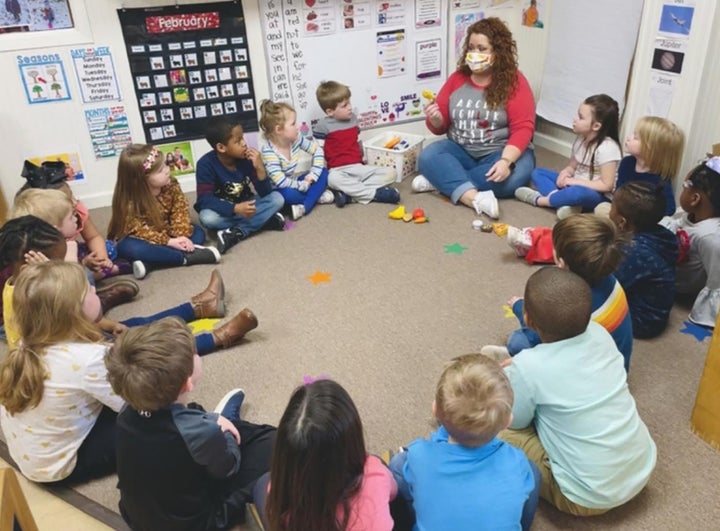
Because of coronavirus-related restrictions, the kids don’t roller skate anymore at the Funtime Preschool in Clinton, Mississippi. But that’s hardly the only change, said Lesia Daniel Hollingshead, who opened an after-school program out of her father’s skating rink more than 20 years ago and has since expanded it into a full-time child care center.
The pandemic upended her entire operation. “It’s completely different,” she said. Enrollment is half of what it was last year and revenue is down 40%. Yet costs have tripled, she said. Operating a child care center in a pandemic is expensive: She employs a full-time person just to keep track of COVID-19 exposures and runs more buses with fewer kids to do pick-up and drop-off, among other things. This summer, in an emotional video, Hollingshead teared up as she talked about all the changes.
“We may not make it,” she said.
Child care centers, schools, and in-home day cares that look after children under the age of 5 took a beating over the last year. Unlike K-12 schools, these centers are small businesses, privately owned and operated. In the pandemic, they’ve seen declining enrollment and higher operating costs. Over the first eight months of the pandemic, 166,000 jobs in the sector evaporated. Many centers have shut down. At least 13% of child care centers and in-home day cares are still closed, according to one survey. That’s an improvement from the summer, but still significant.
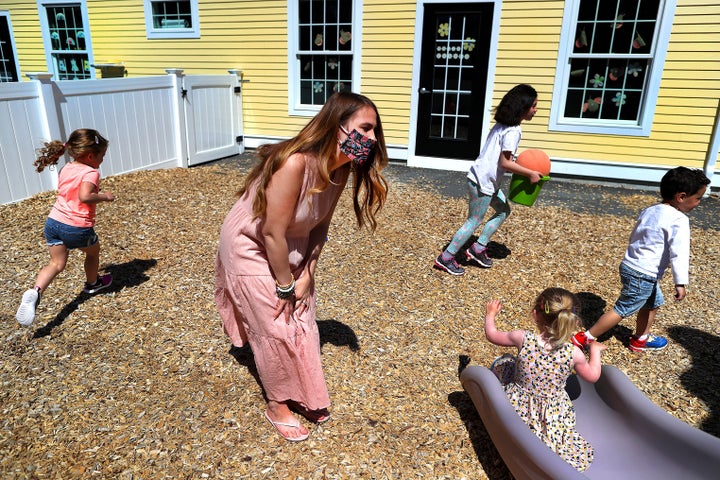
Fifty-six percent of child care centers said they lose money every day they’re open in a December survey from the National Association for the Education of Young Children. Forty percent are dipping into their own savings to get by. If no aid is coming, many will have to shut their doors, even as some providers are actually seeing an increase in demand from parents who want to get back to work.
Late last Friday, the House of Representatives offered a lifeline as part of the COVID-19 relief bill: $39 billion in federal funds distributed through block grants to states, an unprecedented number.
That’s more than 10 times the amount set aside for child care in the CARES Act in the spring and follows $10 billion in aid that passed right at the end of 2020. The money would be crucial for centers struggling to keep their doors open, advocates and lawmakers said. The amount in the bill is also right in line with a $50 billion child care rescue bill that passed the House with bipartisan support last year but never made it to the Senate.
“Though essential to working parents, child care centers operate on a shoestring. The workers responsible for educating little children earn poverty wages. The median annual salary for a child care worker is just $11.65 an hour.”
The last time the U.S. government paid this much attention to child care was during World War II when it funded day cares across the country to ensure women could work in wartime factories.
The money will be parceled out to states to use in a number of ways: They can give more money through subsidies to low-income parents to pay for care or boost reimbursement rates so teachers earn more money. Crucially, the money can be used to specifically help deal with the added costs of COVID-19: to pay for extra personnel, PPE, or other goods and services related to the pandemic. There are subsidies so essential workers, at any income level, can bring their kids to child care, regardless of their income level.
And the money is retroactive, so centers that are already in debt or behind on their rent or mortgage payments can catch up.
The infusion of cash marks a turning point when it comes to the federal government’s support of child care, a long-neglected and long-suffering stepchild of the public education system staffed primarily by underpaid women of color.
The rescue would send a signal that child care matters — a sign of a growing understanding that without this industry and these workers, parents of young children can’t go to work. Advocates have been banging the drum on this for years, but the pandemic drove it home as millions of women were forced out of work due to school and child care closures.
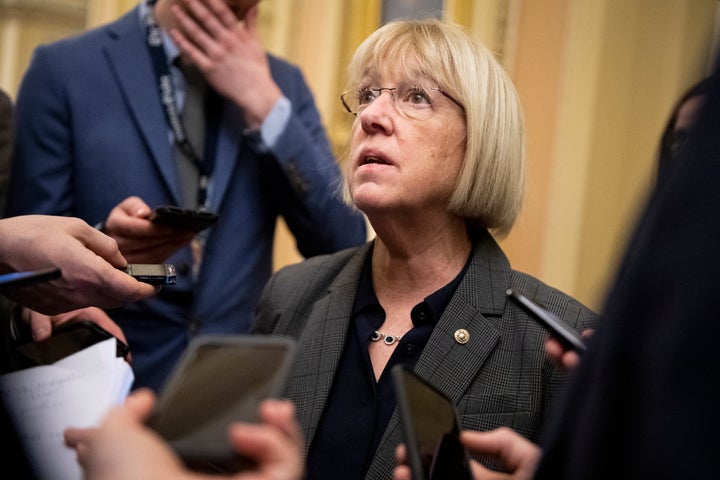
“The American Rescue Plan marks a historic shift in how our country approaches child care,” said Sen. Patty Murray (D-Wash.), who’s been instrumental in pushing for child care aid throughout the pandemic and before. “It will allow providers to stay open and better support families who need help affording quality child care — and it also sets a new precedent for finally prioritizing economic policies that support working women and families. I’m looking forward to getting this across the finish line.”
The child care funding is one of several pieces of the $1.9 trillion rescue bill that the White House believes will particularly help parents, especially women, and it’s relatively noncontroversial. While some Republican lawmakers have lamented that the bill provides an unnecessary amount of aid to K-12 schools, they’ve been largely silent on child care funding.
The child care sector in the U.S. is kind of a hodgepodge industry made up primarily of small businesses with a few larger operators like Bright Horizons tossed in. The data on the industry is spotty, but experts point to this government data to estimate that there are around 130,000 centers and around 433,000 in-home providers (many unlicensed) where parents bring their children to someone’s house.
“It’s hard to track. You could be in someone’s home, in a bigger center, on a military base,” said Katherine Gallagher Robbins, the director of child care and early education at the Center for Law and Social Policy.
About 12 million children rely on the system, or about half of all kids under the age of 5, according to The Washington Post. Certainly, many more families would turn to child care if it were more affordable or available. There are shortages around the country.
And while there’s been a big conversation lately about reopening public schools, there’s been far less attention paid to the child care sector, partly because many of these centers were open throughout the crisis.
“The expectations for this workforce have always been very high, for very low reward and very little support.”
- Caitlin McLean, Center for the Study of Child Care Employment at UC Berkeley
“We knew all along that the work we were doing was essential,” said Davina Boldin-Woods, director of a preschool in Burlington, North Carolina, that didn’t shut its doors over the past year.
Yet that’s not how Boldin-Woods or any of the primarily Black and brown women who work at the center have been treated, she said. Teachers at her child care center make between $13.50 and $18 an hour, with some working multiple jobs and receiving government assistance. Boldin-Woods earns around $45,000 a year for running the whole place, far less than the median U.S. wage or what an elementary school principal would earn.
Yet even for that low pay, Boldin-Woods says her employees kept showing up: “Putting themselves at risk in a pandemic that is killing us at disproportionate rates,” she said. “No one asked us how we felt about this. No one asked us our thoughts and feelings on what we needed to remain safe during this pandemic.”
Though essential to working parents, child care centers operate on a shoestring. The workers responsible for educating little children earn poverty wages. The median annual salary for a child care worker is just $11.65 an hour in the United States, according to a report released last week from the Center for the Study of Child Care Employment at the University of California, Berkeley. Kindergarten teachers make $32.80 an hour.
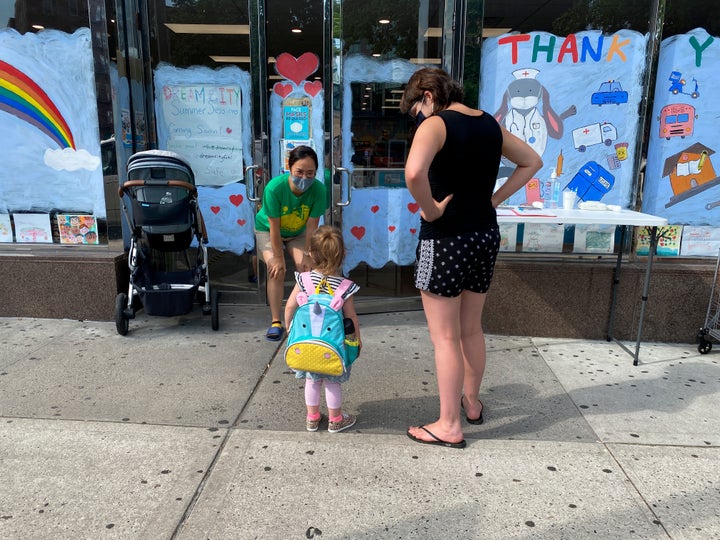
“The expectations for this workforce have always been very high, for very low reward and very little support,” said Caitlin McLean, a senior research specialist at the center and a co-author of the report. Only 2% of all U.S. occupations pay lower wages than in the child care industry, which is made up of primarily female workers of color.
The pandemic only exacerbated these preexisting conditions. Once the shutdowns began in March, parents with means or the ability to work from home pulled their kids out of day care centers. That meant less money coming in while the cost of doing business exploded. Many centers shut their doors.
Last December, Marcia St. Hilaire-Finne, who runs a child care center in Washington, D.C., wondered how much longer she could stay in business, operating at loss with fewer kids and less money coming in.
“We need a lot of help,” she told HuffPost at the time.
The aid from the CARES Act has helped many centers muddle through, but that’s run out. The money Congress set aside in December is also helping at the moment, but experts say it won’t last the year.
By February, Hilaire-Finne had gotten enough help; with a mix of grants, funding from Washington, D.C., and through a program from the new Biden administration, she’s been able to get money for retaining her employees.
“I’m good,” she said. For now, anyway. “We need continuing support.”
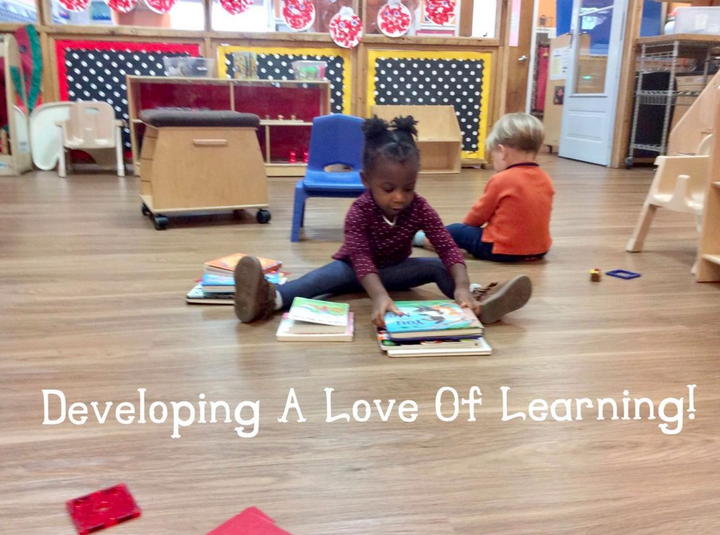
While the funds for child care in this relief package are desperately needed, child care workers and analysts believe that going forward, the whole industry needs to be completely rebuilt.
And the Biden administration has signaled a willingness to do that work. During the presidential campaign, Joe Biden made clear that caregiving would be a central part of his economic plan.
The administration has been selling this rescue package as the first step in that direction.
Back in Mississippi, Hollingshead said things have settled into a new normal. Many of her employees are back from furlough, though she’s not back to pre-coronavirus staffing levels.
If her federal loan comes through, she thinks she’ll make it to the end of 2021. “Then we hope we can go back to full capacity. We’re kind of taking it one hurdle to the next,” she said. “There’s just so much unknown.”
